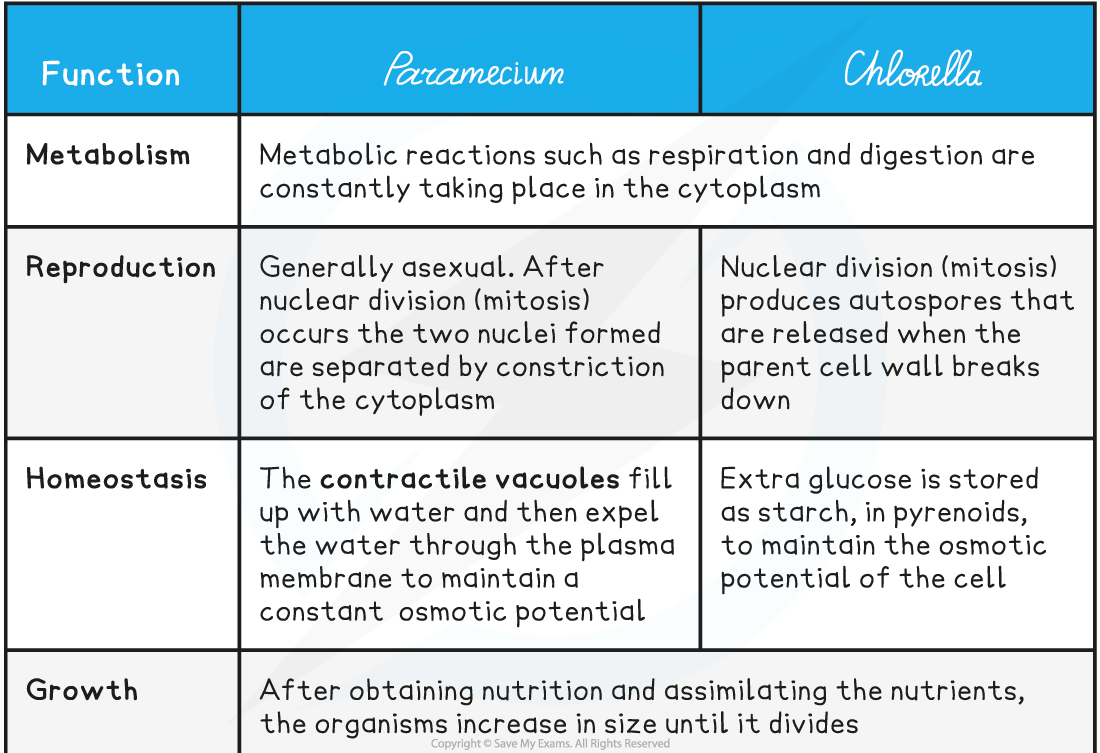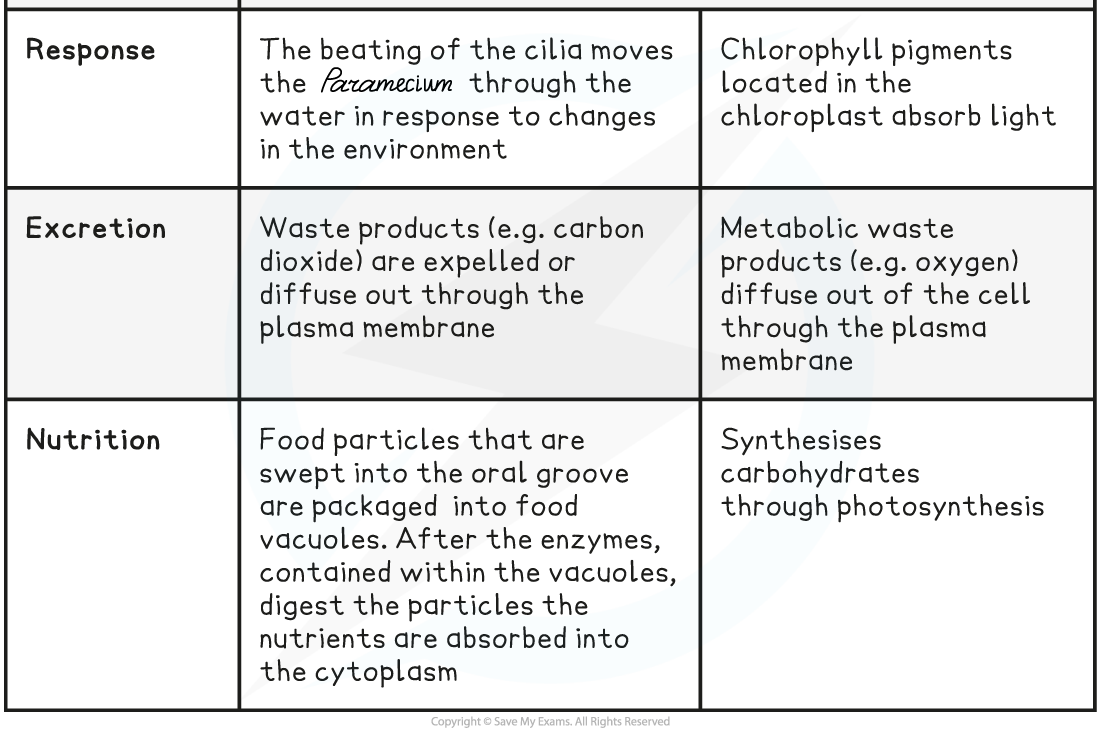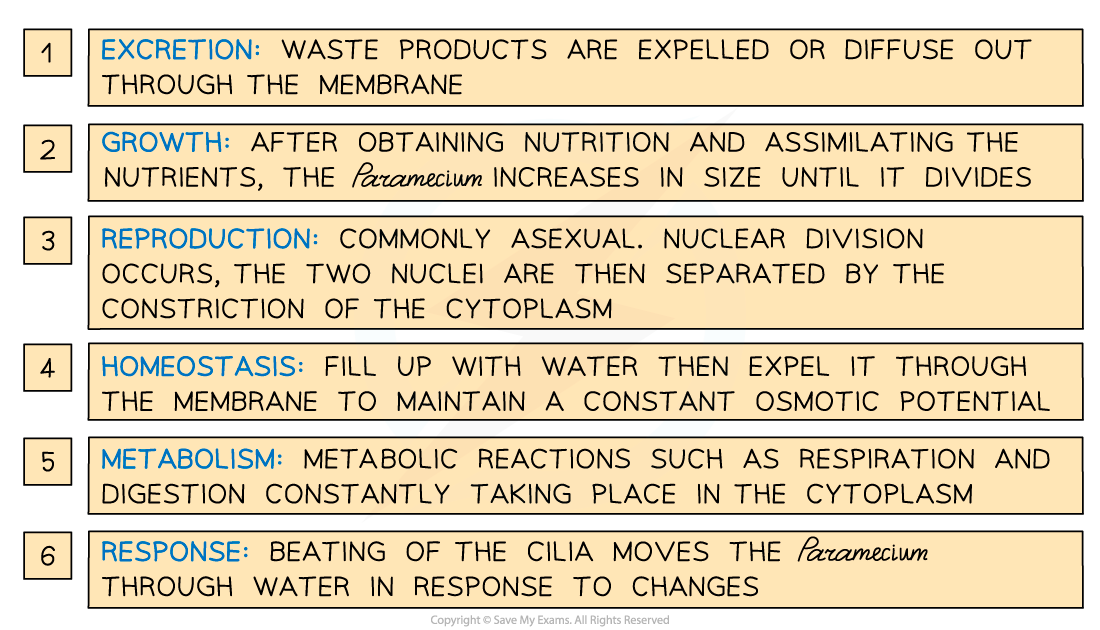Functions of Life
- Unicellular (single-celled) and multicellular (many cells) organisms must carry out the following functions to stay alive:
- Metabolism - all the enzyme-catalysed reactions occurring in a cell, including cell respiration
- Reproduction - the production of offspring. It may be sexual or asexual
- Homeostasis - the ability to maintain and regulate internal conditions within tolerable limits, including temperature
- Growth - the permanent increase in size
- Response - (or sensitivity), the ability to respond to external or internal changes (stimuli) in their environment. Thus improving their chance of survival
- Excretion - the disposal of metabolic waste products, including carbon dioxide from respiration
- Nutrition - the acquisition of energy and nutrients for growth and development, either by, absorbing organic matter or by synthesising organic molecules (e.g. photosynthesis)
Functions of Life: Paramecium & Chlorella
Paramecium
- Paramecium are unicellular protozoans commonly found in freshwater. They range in size from 50 to 320 μm
Chlorella
- Chlorella is a small (2 to 10 μm) unicellular green alga. They are abundant in freshwater and can be found in a symbiotic relationship with Paramecium
- As Chlorella are living they carry out all the functions of life, although due to different structures, there are some differences to Paramecium
Comparison of the Functions of Life Between Paramecium and Chlorella




The functions of life in Paramecium

The functions of life in Chlorella
Exam Tip
To remember the functions of life think of MR H GREN. Note the similarities in the functions of life between Paramecium and Chlorella.